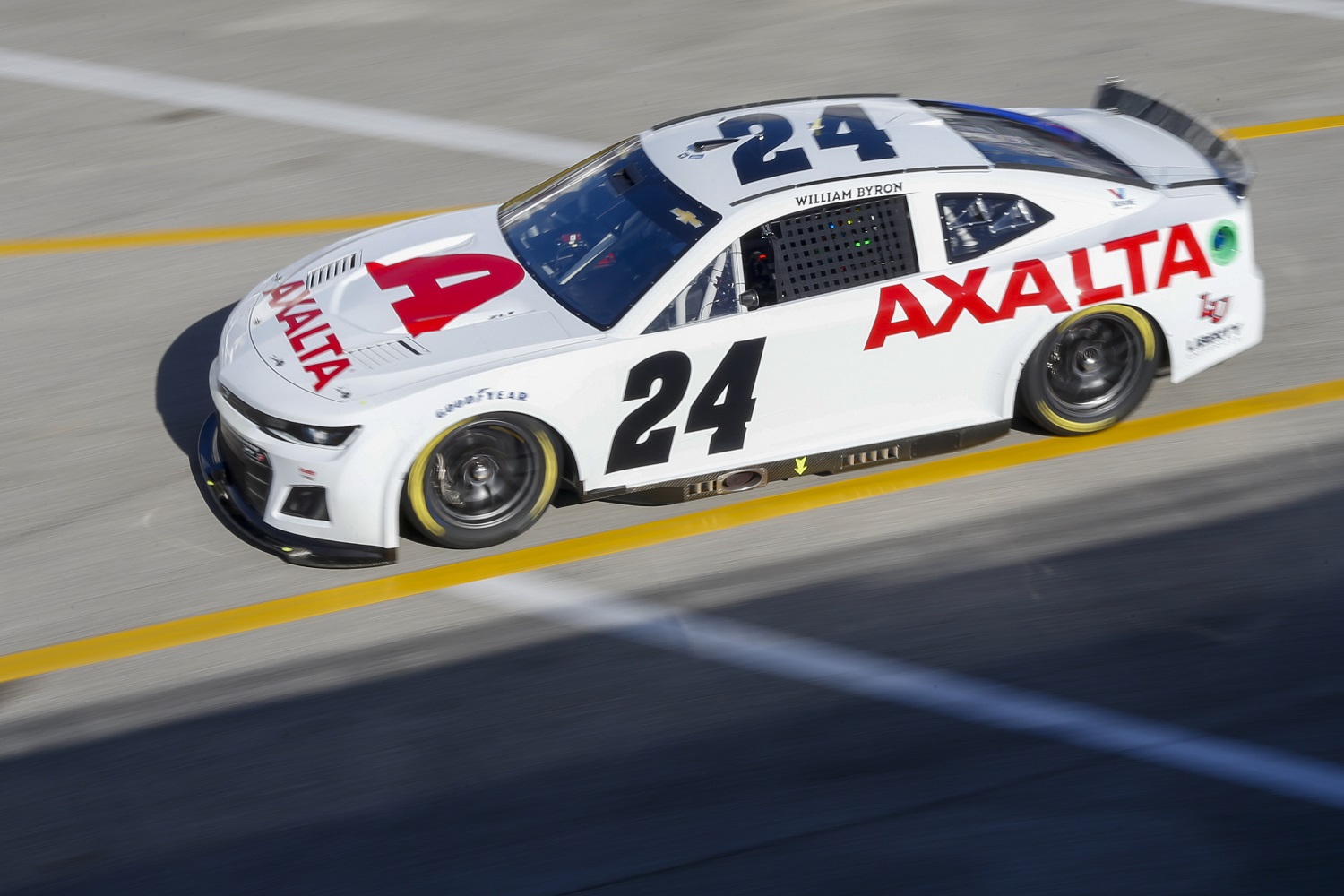NASCAR
A Daytona 500 Tradition May Fall Victim to Problems With NASCAR’s Next Gen Car

NASCAR Cup Series drivers push their cars to the limit. And as good as those cars are, that results in the occasional blown engine. Now, the governing body is pushing the entire sport to the limit, and it could result in a blown deadline. It potentially affects stars like Kyle Larson, Kevin Harvick, Denny Hamlin, and Martin Truex Jr.
Problems with its Next Gen car could require NASCAR to enforce a “leave no chassis behind” policy, much to its embarrassment.
That proverbial white flag will be waving shortly
The NASCAR season is coming up faster than the turns at Bristol or Martinsville on race days. The Busch Light Clash at the Los Angeles Coliseum goes off on Feb. 6, followed 11 days later by the 150-mile duels at Daytona. And that’s when the white flag signifying one lap to go comes out: The Daytona 500, the first points race of the season, arrives on Feb. 20.
Everything related to the Next Gen car should be fine up to that point and even a bit beyond. But how far NASCAR can stretch its supply line after that is the question. The NFL doesn’t run out of footballs, nor do MLB teams run out of baseballs. But NASCAR potentially cannot get enough cars into its teams’ hands early in the new season.
Bob Pockrass reported this week that teams are getting nervous. The Fox Sports racing reporter said NASCAR originally believed it could deliver five cars to each team by the start of the season for every car they field. However, teams testing at Daytona this week revealed they had just two completed cars. A third is being assembled, and the end of February is the best-case scenario for getting the full allotment.
That may not pose a huge threat to Hendrick Motorsports, Joe Gibbs Racing, and the other mega-teams, but the margin for error by drivers at smaller teams is perilously small. Mangle one car in practice or qualifying and then lose a second car in “The Big One” at Daytona, and a driver could be competing the following weekend at Fontana in a pair of Nikes.
A Daytona 500 tradition may fall victim to the Next Gen car shortage
It was always going to be iffy whether NASCAR could meet the delivery dates for Next Gen cars. Taking development from blueprints to prototypes to production pushed the process to the last possible minute and beyond. That meant pushing back the delivery of major components. Most of those parts might reach individual shops shortly after Daytona, but it’s still up to the teams to assemble the cars.
“Right now, we don’t see any parts or pieces that are going to keep any car from racing in an event. … Time will tell,” NASCAR vice president John Probst said. “But right now, we’re concerned, but we’re not in a situation where folks are not going to be able to race.”
However, there is enough concern that NASCAR may have to put the kibosh on a tradition that goes back nearly a quarter of a century. Each year since 1997, teams entering cars in the Daytona 500 have signed an agreement to loan their winning car to Daytona International Speedway, which uses it as a tourist attraction for the remainder of the year.
Fox Sports’ Bob Pockrass tweeted that he has been told the tradition may go by the wayside for 2022; if NASCAR can’t deliver all the cars it promised, teams might feel compelled to hang on to every chassis, engine, and lug nut out of an abundance of caution.
Delays with new NASCAR models aren’t unprecedented
While team owners and shop managers are concerned about car deliveries, some have been through delays before regarding updated technology.
In 2001, Dale Earnhardt Sr. died in a crash on the last lap of the season-opening Daytona 500. That was the impetus for NASCAR beginning a complete evaluation and overhaul of its Cup Series cars. The process culminated with the Car of Tomorrow, NASCAR’s fifth-generation model.
However, the CoT rollout didn’t happen until 2007, two years later than projected. Even then, though, it wasn’t a smooth transition. NASCAR didn’t debut the car until the Food City 500 at Bristol, the fifth race of the season, and it didn’t become the full-time model until 2008.
In that case, safety drove the delays. That came into play this time around, too. NASCAR pushed back production while engineers dealt with excessive heat inside the car and conducted crash tests.
“You’ve always got some concerns, but I think NASCAR is approaching it right from a safety standpoint,” team owner Richard Childress said, according to Racer.com. “Because we went back after each team test, the crash test, and they’d go back and make changes to make the car safer and better, and I think that’s one reason we kind of got behind.
“NASCAR’s No. 1 thing is safety with this car.”
Like Sportscasting on Facebook. Follow us on Twitter @sportscasting19.











